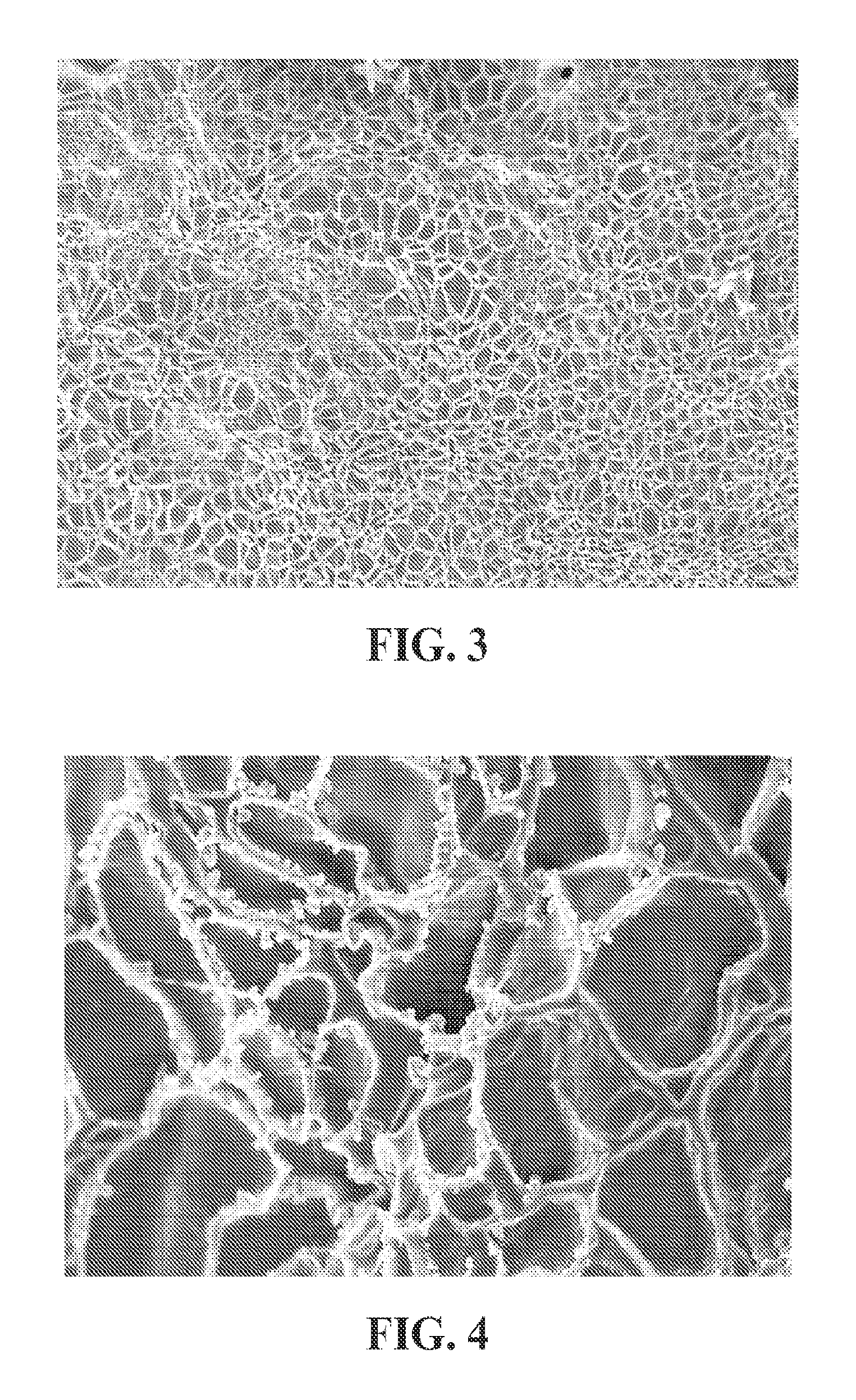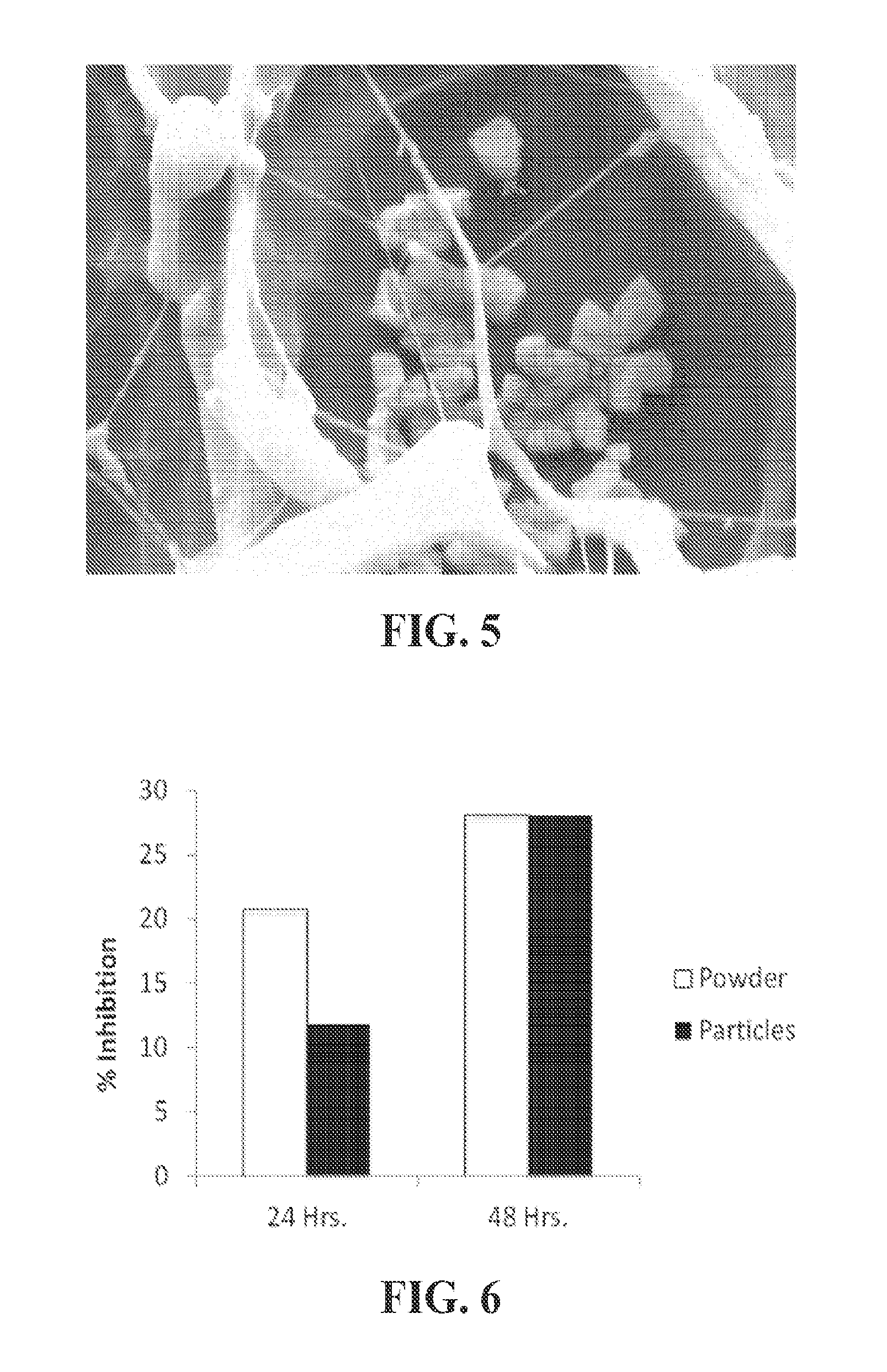Compositions and methods for reducing oxidative damage
a technology applied in the field of compositions and methods for reducing oxidative damage, can solve the problems of inconformity of half of patients facing these requirements after vitrectomy, high difficulty in maintaining a head-down position for a prolonged time, and insufficient compliance with the requirements of vitrectomy, so as to reduce potential interference, promote polymerization, and facilitate the effect of composition polymerization
- Summary
- Abstract
- Description
- Claims
- Application Information
AI Technical Summary
Benefits of technology
Problems solved by technology
Method used
Image
Examples
example 1
Synthesis of Oxygen Barrier Composition
[0072]To synthesize an exemplary oxygen barrier composition, in some embodiments, 1 mL of the composition is prepared by initially preparing a buffer solution by boiling 100 mL of ultra-pure de-ionized water (18 MΩ resistance) for one-half hour and then adding 2-[4-(2-hydroxyethyl)piperazin-1-yl]ethanesulfonic acid (HEPES, free acid version) to the de-ionized water to a final concentration of 10 mM. The pH of that solution is then adjusted to 7.2 using a minimal amount of sodium hydroxide. A separate eosin Y solution is then prepared by dissolving 6.4 μL eosin Y in 10 mL of ultra-pure de-ionized water (18 MΩ resistance) by sonication in a bath sonicator for 30 minutes. At the same time, trehalose particles having a sub-micron size are prepared by mixing 1 g of trehalose and 0.025 w / v % Tween 20 in ultra-pure de-ionized water (18 MΩ resistance). That mixture was then spray dried using a Buchi B-90 nanospray dryer (BÜCHI Labortechnik, Flawil, Swi...
example 2
Characterization and Analysis of the Oxygen Barrier Composition
[0074]To characterize and analyze the synthesized oxygen barrier composition produced in Example 1, and to determine whether the synthesized oxygen barrier composition has desirable optical and physical characteristics that would allow it to be used to prevent oxidative damage to the lens of an eye, a number of measurements were taken. From those measurements, the components of the composition could then be varied and adjusted, if necessary, to produce an oxygen barrier composition having the desired properties (e.g., optical, biocompatibility, etc.).
[0075]In the characterization of the composition, osmolarity of the pre-gel composition was first assessed using 50 μL of sample in a 5004 MICRO-OSMETTE™ Automatic High Sensitivity 50 μL Osmometer (Precision Systems, Inc.) The osmolarity was calculated as an average of 5 readings (280 mOs, 289 mOs, 312 mOs, 296 mOs, 334 mOs) from the osmometer, and was measured to be 302.2±2...
example 3
Ex Vivo Analysis
[0093]To analyze the efficacy and the biocompatibility of the compositions produced as described above, an ex vivo analysis was undertaken in which the compositions were applied to eye lenses ex vivo. In these experiments, harvested porcine lenses were utilized. However, because freshly (less than 6 hrs) harvested porcine lenses typically opacify within 48 hours of being cultured in HEPES buffer ex vivo (see, e.g., FIG. 10), a revised lens culture method was developed to clear the lenses and allow them to be used to assess the clarity and other properties of the compositions. Briefly, in these experiments, it was found that M199 culture medium (Gibco® #11043-023, without Phenol red, Invitrogen, Carlsbad, Calif.) supplemented with 4% sterile-filtered porcine serum, 100 units / ml penicillin and 100 μg / ml streptomycin, and additional 5.96 g / L HEPES was preferable. In that modified medium, the lenses initially became opaque, but subsequently cleared up within 7 to 10 days...
PUM
| Property | Measurement | Unit |
|---|---|---|
| Temperature | aaaaa | aaaaa |
| Temperature | aaaaa | aaaaa |
| Fraction | aaaaa | aaaaa |
Abstract
Description
Claims
Application Information
 Login to View More
Login to View More - R&D
- Intellectual Property
- Life Sciences
- Materials
- Tech Scout
- Unparalleled Data Quality
- Higher Quality Content
- 60% Fewer Hallucinations
Browse by: Latest US Patents, China's latest patents, Technical Efficacy Thesaurus, Application Domain, Technology Topic, Popular Technical Reports.
© 2025 PatSnap. All rights reserved.Legal|Privacy policy|Modern Slavery Act Transparency Statement|Sitemap|About US| Contact US: help@patsnap.com



